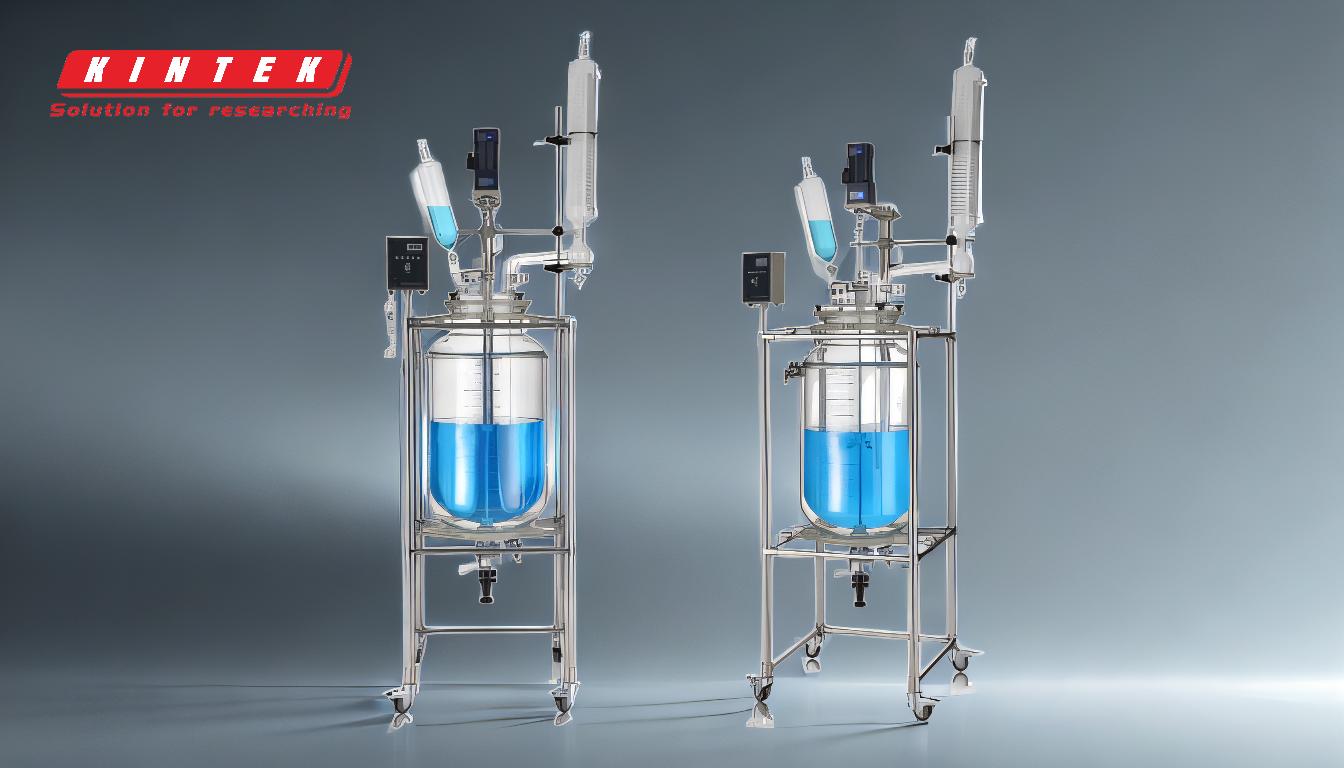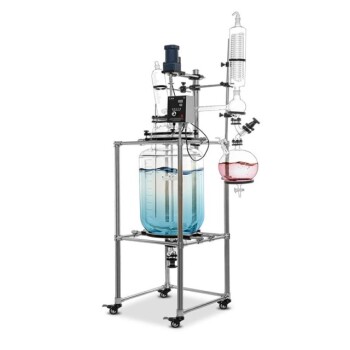Reactor jackets are essential components in jacketed vessels, designed to regulate the temperature of the contents by circulating heating or cooling fluids. There are several types of reactor jackets, each with unique features and applications. The most common types include dimple jackets, plate coils, half-pipe coil jackets, and conventional jackets. These jackets are used for specific purposes, such as managing high heat during reactions or reducing the viscosity of liquids. Understanding the differences between these types can help in selecting the most suitable jacket for a particular industrial process.
Key Points Explained:

-
Dimple Jacket
- Description: Dimple jackets are characterized by small, dimple-like indentations on the surface of the vessel. These indentations create turbulence in the circulating fluid, enhancing heat transfer efficiency.
- Applications: Ideal for processes requiring uniform heat distribution, such as chemical reactions or maintaining consistent temperatures in viscous liquids.
- Advantages: High heat transfer efficiency, cost-effective, and easy to clean.
- Limitations: Not suitable for extremely high-pressure applications.
-
Plate Coil Jacket
- Description: Plate coil jackets consist of welded plates that form channels for the heating or cooling fluid to flow through. They are typically installed on the exterior of the reactor vessel.
- Applications: Suitable for processes requiring precise temperature control, such as pharmaceutical manufacturing or food processing.
- Advantages: Excellent heat transfer, compact design, and ability to handle high-pressure applications.
- Limitations: More expensive to manufacture and maintain compared to other types.
-
Half-Pipe Coil Jacket
- Description: Half-pipe coil jackets are made by welding half-pipes around the exterior of the reactor vessel. These pipes create a spiral path for the fluid to circulate.
- Applications: Commonly used in processes involving high temperatures or pressures, such as polymerization or distillation.
- Advantages: High mechanical strength, efficient heat transfer, and ability to handle high-pressure and high-temperature conditions.
- Limitations: Complex manufacturing process and higher cost.
-
Conventional Jacket
- Description: Conventional jackets are the most basic type, consisting of an outer shell surrounding the reactor vessel. The heating or cooling fluid flows through the space between the vessel and the outer shell.
- Applications: Suitable for general-purpose temperature control in industries like chemical processing or petrochemicals.
- Advantages: Simple design, cost-effective, and easy to install.
- Limitations: Lower heat transfer efficiency compared to other types, and not suitable for high-pressure applications.
-
Paint Rings (Medium Pipe Curl Jacket)
- Description: Paint rings, also known as medium pipe curl jackets, are a specialized type of jacket that uses a series of rings or coils to distribute the heating or cooling fluid.
- Applications: Often used in processes requiring localized temperature control, such as coating or painting applications.
- Advantages: Provides targeted heat transfer, suitable for specific industrial needs.
- Limitations: Limited to specific applications and not as versatile as other types.
-
Selection Criteria for Reactor Jackets
- Process Requirements: Consider the temperature range, pressure conditions, and type of fluid being processed.
- Heat Transfer Efficiency: Evaluate the efficiency of heat transfer required for the process.
- Cost and Maintenance: Factor in the initial cost, installation, and ongoing maintenance of the jacket.
- Material Compatibility: Ensure the jacket material is compatible with the process fluids and conditions.
By understanding the features, advantages, and limitations of each type of reactor jacket, purchasers can make informed decisions that align with their specific industrial needs. Whether prioritizing heat transfer efficiency, pressure handling, or cost-effectiveness, there is a reactor jacket type suited for every application.
Summary Table:
| Type | Applications | Advantages | Limitations |
|---|---|---|---|
| Dimple Jacket | Chemical reactions, viscous liquids | High heat transfer, cost-effective, easy to clean | Not suitable for high-pressure applications |
| Plate Coil Jacket | Pharmaceutical manufacturing, food processing | Excellent heat transfer, compact design, handles high pressure | Expensive to manufacture and maintain |
| Half-Pipe Coil Jacket | High-temperature processes (e.g., polymerization, distillation) | High mechanical strength, efficient heat transfer, handles high pressure/temp | Complex manufacturing, higher cost |
| Conventional Jacket | General-purpose temperature control (chemical processing, petrochemicals) | Simple design, cost-effective, easy to install | Lower heat transfer efficiency, not suitable for high-pressure applications |
| Paint Rings | Localized temperature control (e.g., coating, painting) | Targeted heat transfer, suitable for specific needs | Limited to specific applications, less versatile |
Need help selecting the right reactor jacket for your process? Contact our experts today for personalized guidance!









